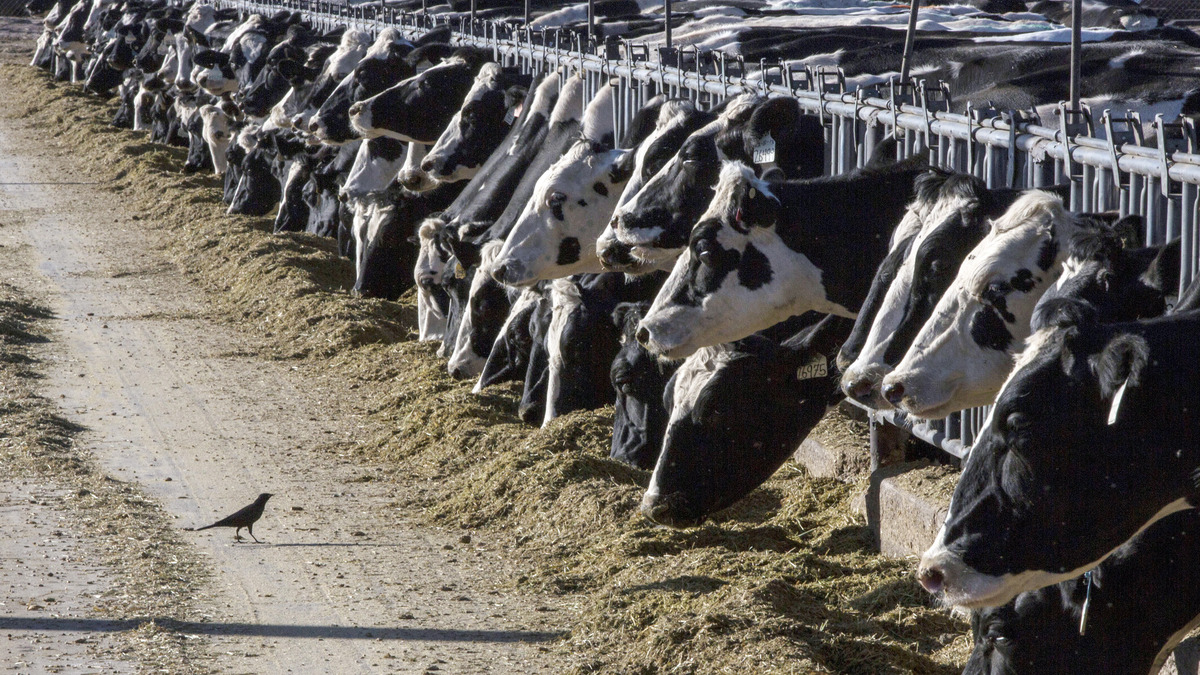The outbreak of bird flu in dairy cows in the United States and the case of a human in Texas testing positive for the virus have caused widespread concerns. The US Centers for Disease Control and Prevention (CDC) said earlier this week that a dairy worker in Texas was found infected with avian influenza.
This is only the second human case of the H5N1 virus in the US, with the first reported in 2022 in a poultry worker in Colorado. It is also the first time bird flu has been detected in dairy cattle in the US.
Let’s take a closer look.
How deadly is bird flu?
It is a disease in birds triggered by infection with highly contagious avian influenza Type A viruses. “These viruses naturally spread among wild aquatic birds worldwide and can infect domestic poultry and other bird and animal species,” according to the CDC.
Its H5N1 strain was first detected in domestic waterfowl in China in 1996. Later, it was spread across the world by migratory birds.
For at least the past two years, avian influenza has spilled over from birds to mammals.
Sea birds, foxes, goats, cats, racoons, skunks, elephant seals, and large mammals like bears and cows have been reported to be infected with bird flu.
Since late March, bird flu has been confirmed in dairy cow herds across five states in the US, including Idaho, Kansas, Michigan, New Mexico, and Texas.
Impact Shorts
More ShortsBird flu in humans
This is not the first time bird flu has been identified in humans. There have been sporadic cases since 1997 when several people were infected during a poultry outbreak in Hong Kong.
While most human infections were detected in Asia, cases have also been reported in Africa, Americas, and Europe. India reported its first case and death due to H5N1 in 2021, reported Indian Express.
According to the World Health Organisation (WHO) data, there were 887 human cases of H5N1 between 2003 and 2024, of which 462 died. The fatality rate of the virus is estimated to be 52 per cent.
As per Pan-American Health Organization, infected humans can show several symptoms like fever, cough, body aches, pneumonia, shock, breathing difficulty, and even death sometimes.
How worried should we be now?
Although avian flu infections in humans have been few, many have been deadly. If bird flu emerges as the next pandemic, it would be more dangerous than COVID-19, experts warn.
Citing virus researchers, Daily Mail reported that a bird flu pandemic could be “100 times worse than COVID”, killing up to half of the infected patients.
John Fulton, founder of Canada-based pharmaceutical company BioNiagara, said at a meeting attended by bird flu researchers, doctors and officials from government agencies that the H5N1 strain “appears to be 100 times worse than COVID, or it could be if it mutates and maintains its high case fatality rate.
“Once it’s mutated to infect humans, we can only hope that the [fatality rate] drops.”
According to Dr Suresh Kuchipudi, a bird flu researcher in Pittsburgh, Pennsylvania, bird flu has been on the “top of the pandemic list for many, many years and probably decades.”
Speaking at the briefing, Dr Kuchipudi said that “now we are getting dangerously close to this virus potentially causing a pandemic,” reported Daily Mail.
It must be noted that bird flu is already a panzootic, akin to a pandemic in the animal world. Its cases have been found in every continent except Australia, noted New York Times (NYT).
However, experts maintain that the virus has not evolved yet to transmit from one person to another. Most humans identified with bird flu worldwide came in close contact with infected birds, or mammals. They did not spread the disease to other humans.
As per the US CDC, the patient in Texas contracted the virus presumably from infected dairy cows. This would be the maiden instance of the cow-to-human spread of bird flu. The only symptom shown by the infected farm worker was eye redness or conjunctivitis.
The human infections so far “fortunately are all still single-time cross-species transmission,” Vincent Munster, a virologist at the National Institute of Allergy and Infectious Diseases, told NYT.
The genome sequencing of the virus in the Texas patient showed “minor changes”, NPR reported citing CDC. Thus, arresting the spread of the virus is important so that it cannot mutate further.
So, is it a cause for alarm?
Speaking to Indian Express, Dr E Sreekumar, director of the Institute of Advanced Virology, Thiruvananthapuram, said, “One case is not enough to say that the infection can cause a pandemic. It is too early. However, it is important to keep an eye on the pathogen for changes that can make it more transmissible”.
US federal officials and scientists maintain that the risk of bird flu to the public continues to be low, reported NPR.
With inputs from agencies
)